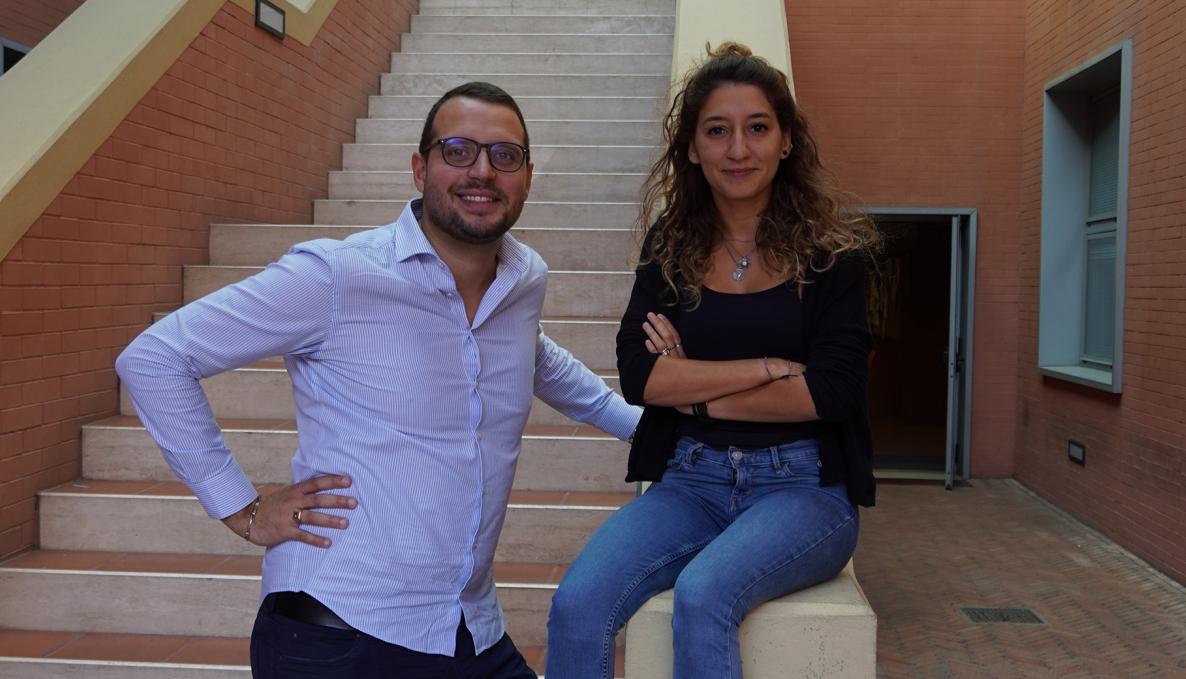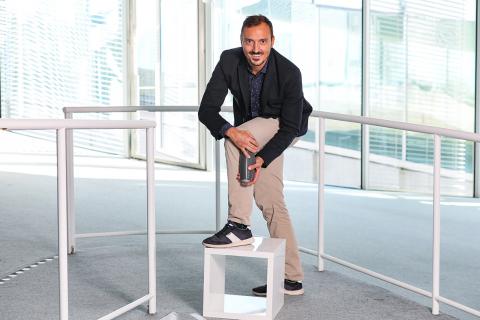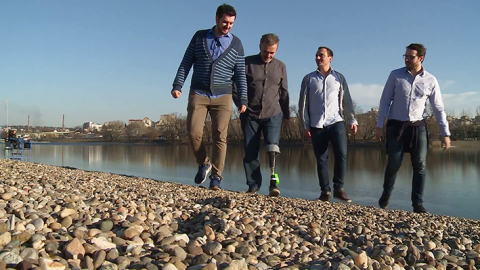A STORY OF TALENT: research by biorobotics institute phd students on sensory feedback restoration in transfemoral amputation published in Nature Medicine and Science Translational Medicine journals

It has taken a few weeks’ time two research papers co-authored by PhD students Federica Barberi and Giacomo Valle to be published in international journals Nature Medicine and Science Translational Medicine.
Federica Barberi and Giacomo Valle, PhD students of the Biorobotics Institute have worked on sensory feedback restoration in leg amputees with Professor Silvestro Micera and Professor Stanisa Raspopovic at the ETH Zurich and EPFL Lausanne Robotics and Neuroprosthetics institutes.
“It is a great feeling to see patients feel confident about walking on uneven and rocky surfaces for testing pressure patterns – said Federica Barberi, second year PhD student, who is currently working on human motor decoding from neural signals”.
Advances in the electrode microfabrication and modeling of neuronal signaling drive the development of neuroprosthetic devices. This study wants to minimize the foreign body response and improve deep brain stimulating devices used for transfemoral amputees. While walking, we have perceptions of foot contact and knee motion through nerve stimulation. By contrast, transfemoral amputees cannot convey sensory information about motion, consequentially reducing confidence and walking speed. Individuals show higher mental and physical fatigue, poor control of foot placement and less stability, potentially leading to greater risk of falling.
The lack of physiological feedback from the remaining extremity to the brain contributes to the generation of phantom limb pain from the missing leg. By combining implanted intraneural stimulation devices that stimulate or enhance the nervous system via electrical stimulation to compensate for motor deficiencies, the interface will allow for communication with the human body providing a more precise and reliable neural control, regardless of limb position and environmental conditions. Minimizing the need for compensatory movements, the prosthesis will reduces disability and improves walking performance.
Giacomo Valle has worked on the development of wireless, embedded microsensors. “Our results show we can improve the functional mobility and quality of life in individuals with lower extremity impairments – he said. We have worked on machine learning algorithms that extract signals activity from muscles and interpret them into biosignals for the brain”.
Valle received his degree in 2016 from the University of Genova. In his thesis, he discussed a hybrid finite element method modeling neural response computation. He has just entered the third year of his PhD in Biorobotics.
Federica Barberi received hers degree in 20167 from the Politecnico di Milano. She submitted her thesis at EPFL Lausanne. “Imagine walking along a path and you suddenly step on rocks. We need to experience these sensations for our safety. We hope this technology will help many in the future”.





